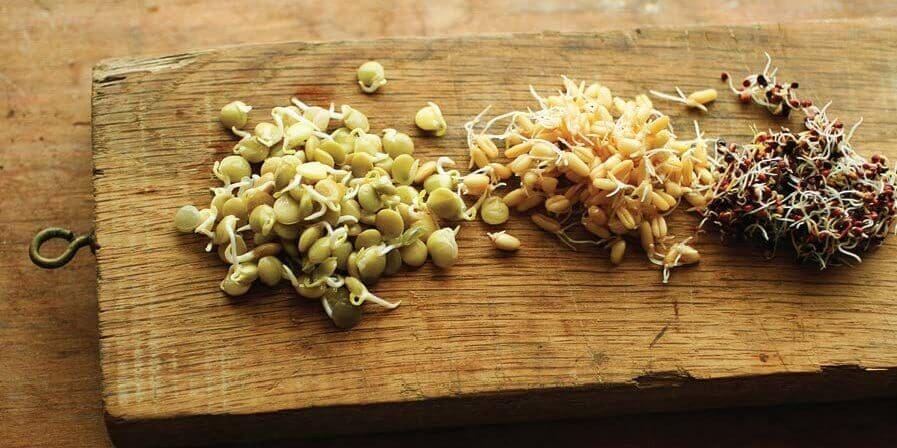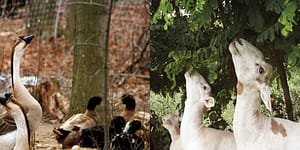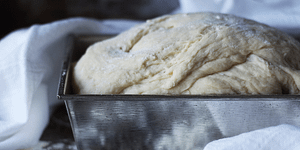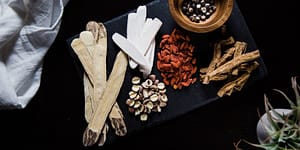Sprouted Amaranth Alegria Energy Bars

One simple and healthy way to breathe life back into your diet is by sprouting your own seeds. You can make nutrient-rich sprouts from all kinds of edible seeds right in your own kitchen.
Sprouts are incredibly versatile too! You can make chickpea sprout hummus, salads, or in this case: energy bars!
The following is an excerpt from The Wild Wisdom of Weeds by Katrina Blair. It has been adapted for the web.
Sprouted Amaranth Alegria Bars
Ingredients
1⁄4 cup sprouted amaranth seeds
1 cup sprouted sesame seeds
1 cup sprouted sunflower seeds
2 tablespoons raw cacao powder
1 cup sprouted pumpkin seeds
3 tablespoons raw honey
Procedure
- Mix all ingredients together and shape into bars.
- Dehydrate either in the sun for a day or in the dehydrator for several hours until firm.
- Enjoy this living raw treat as a snack on adventures in the wild. You can also make this bar by toasting the amaranth in a dry skillet and then adding raw, unsprouted, lightly ground sunflower and pumpkin seeds. Although sprouting the seeds brings a higher energy to the bars, toasting them is another way to make the recipe in a very short time so as to have it available when you need it and to bring a unique flavor into the recipe.
Growing Sprouts: The Eva Way
By Didi Emmons
Growing sprouts is one of the simplest things you can do to breathe life into the deprivations of winter. As an urbanite who doesn’t have much space or sun to grow food, sprouts are one thing I can grow at any point in the year. Sprouts are replete with vitamins, minerals, proteins, and enzymes. Sprouting is easy, as easy a process as cooking rice. And there is a satisfaction in fostering and watching them grow and prosper. It feeds my maternal side, without the crying and diapers.
Most any edible seed can become an edible sprout, but I like to sprout wheat berries, kamut, quinoa, lentils, and chickpeas. Other possibilities include hulled sunflower seeds, buckwheat groats, spelt, soybeans, peas, brown mustard seeds, radish seeds, broccoli seeds, rye seeds, cabbage seeds, and herb seeds. You can also sprout raw peanuts, black-eyed peas, adzuki beans, green channa, and, more commonly, alfalfa, clover, and mung bean. Tomato and potato sprouts are said to be poisonous.
Two Ways To Grow Sprouts
There are two main ways to grow sprouts at home: in a jar or in a bag (of any sturdy mesh fabric, whether natural or synthetic fiber).
- In either case, start by rinsing about 1 cup of legumes or seeds and then letting them soak overnight.
- Drain, rinse again, and transfer the legumes or seeds to a big glass jar or mesh bag large enough to hold five times the quantity of seeds or legumes that you have.
- Tie the bag closed or secure cheesecloth over the mouth of the jar to keep debris out and to facilitate easy straining. Hang the bag or store the jar in a dark, humid place if possible, and rinse morning and night.
- Eventually, after somewhere between two and ten days, depending on the type of seed, you will notice that the seeds have sprouted.

Sources
Don’t buy your seeds at a garden center, there is a risk they may be contaminated with chemicals or bacteria. I get my seeds at a local natural foods store and they sprout—no problem. But if you are serious, there are plenty of websites like Sproutman.com that sell seed grown specifically for human consumption. “The Sproutman” also offers a helpful circular sprout chart for $5 that lists an array of seeds you can sprout, with the corresponding sprouting times, the suggested method, the level of difficulty, uses, flavors, and so on. It is worth getting.
Storage
After giving sprouts one final rinse, put them back in the same container you grew them in or in a plastic bag poked with a knife to ensure air circulation. Sprouts are living plants. They last about a week in the fridge in a plastic container, though legume sprouts may last longer.
Recommended Reads
Recent Articles
Have you heard of silvopasture? This system of managing grazing animals is an ancient practice that integrates trees and pasture into a single system for raising livestock. These systems are managed for both forest products and forage, providing short-and long-term income sources in a mutually beneficial way for healthier animals, better soil, less pest control and mowing, and…
Read MoreWant to spice up your traditional bread recipes? This salt-rising bread recipe by fermentation expert Sandor Ellix Katz has all the simplicity, flavor, and uniqueness you’ve been searching for! The following is an excerpt from Sandor Katz’s Fermentation Journeys by Sandor Ellix Katz. It has been adapted for the web. What Is Salt-Rising Bread? Salt-rising…
Read MoreLearning how to ask questions that will elicit relevant information is as much an art form as creating an herbal formula. Follow this broad list as a starting point.
Read MoreNothing says “spring” like a fresh, foraged meal! Savor the flavors of the season with this Milkweed Bud Pizza recipe.
Read MoreOxeye daisies are one of the most important plants for pollinators including beetles, ants, and moths that use oxeye daisies as a source of pollen and nectar. Instead of thinking about removing a plant like oxeye daisy, consider how you can improve the fertility and diversity of habitat resources in your home landscape, garden, or…
Read More









